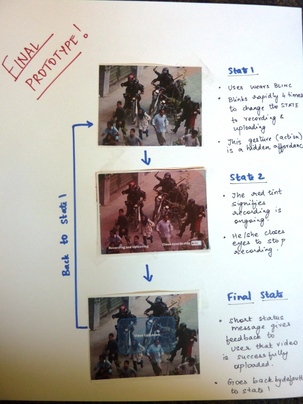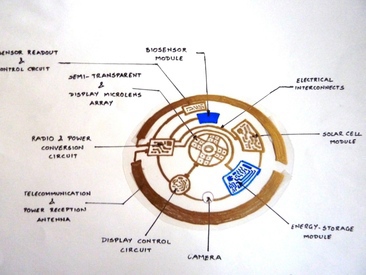BLINC: Bionic Lens (with) Interactive Network Communication
The objective of this design project BLINC was to envision a mobile interaction in the year 2025 for a particular set of users. In our case, the users were for the activists in the repressive regimes.
Challenge: Political Activists working to counter oppressive regimes all over the world need a way to share information without complexities under situations where they are in imminent physical danger. The economical and political conditions is predicted to worsen and the case cannot be ignored when the government tightens more screws with the advancement in technology to invade into people privacy deeper. As a result, more activists would come into play and there will be more conflicts between government and activists, who would want to oppose government in the interest of citizens.
My Role: User Researcher.
Process:
Challenge: Political Activists working to counter oppressive regimes all over the world need a way to share information without complexities under situations where they are in imminent physical danger. The economical and political conditions is predicted to worsen and the case cannot be ignored when the government tightens more screws with the advancement in technology to invade into people privacy deeper. As a result, more activists would come into play and there will be more conflicts between government and activists, who would want to oppose government in the interest of citizens.
My Role: User Researcher.
Process:

Stage 1: Investigation

Investigation: User Interviews
Some of today's repressive regimes include countries like Burma, Cuba, Iran, North Korea, Uzbekistan and Turkmenistan. Acquiring first hand field observation and conducting contextual inquiries or being design ethnographers was out of the scope of this project. So, the major chunk of background research was studying activists movements and their current scenarios through readings, organizations websites, blogs, twitter, Facebook, YouTube and some scholars from regional activists groups and schools.
Stage 2. Ideation

Ideation: Brainstorming, Scenarios, Personas, White Board Sketches
With information gathered, problems understood and constraints known, we commenced with brainstorming sessions in rooms with big white boards. 7 Brainstorming rules were followed and 1 peace-keeper was assigned. We encouraged all ideas - logical or wild. Ideas were listed and then short-listed considering into account the constraints and by mapping situations 15 years ago, present and 15 years from now on. Card-sorting, defining scenarios, personas, role-playing, paper sketching were part of our ideation techniques.
Result: A Bionic Contact Lens with video-recording capability.
Stage 3. Prototyping

Prototypes: Tinted Screens with overlooking commands as UI
The goal of our prototypes was to give users an experience similar to wearing contacts. We wanted users to be able to see their normal environment but with text super-imposed on it. We defined flow of interactions to switch between different modes, defined commands/gestures, designed interfaces. The idea was to keep UI simple yet effective to carry out different functions as of video recordings and uploading on Internet, all the while without using any body gestures or buttons. Just different eyes-blinks patterns.
Stage 4. Evaluation

User Testing & Prototyping
We evaluated our prototype with diverse user groups ranging from fellow students, software design engineer at Microsoft, member of Peace and Resolution committee, HCDE professor and UX Designer at Microsoft Research. Prototypes were improved, gestures were refined and design process was reiterated to give a final fool-proof Design Solution to our problem.
Result:

Bionic Lens: Design Adapted from Dr. Babak Parviz's Bionic Lens Design
The lens would feature a connection to the internet, allowing political activists to record and share information with the rest of the world in a safe, inconspicuous manner. Political unrest and significant events could be recorded and shared with a series of blinking motions, protecting the wearer's identity while collecting the data. Some technology assumptions for design: ubiquitous internet access in 2025.


